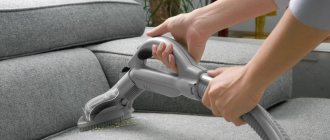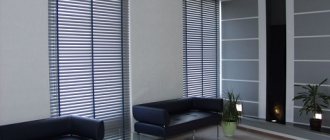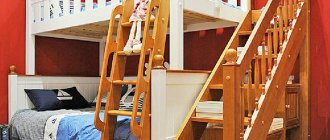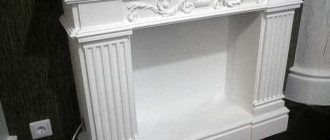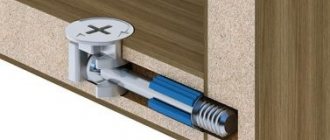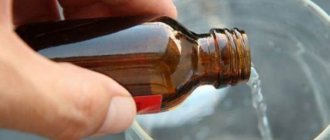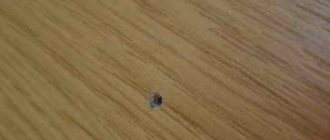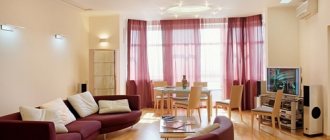Chinille is a beautiful soft, dense and velvety fabric that is used as upholstery and for making curtains. Among furniture fabrics, chenille is the leader; it can have different composition, color and texture.
The name of this textile comes from the French word, which translates as “caterpillar”. However, this is a figurative comparison, and it only speaks of the specificity of the soft and fluffy material. Due to the fact that this fabric has a French name, there is still debate about the correct pronunciation and spelling of this word. Both the word "chinille" and "chenille" appear.
Chinilla fabric has a specific thread structure, the base of which is wrapped in special soft fleecy fibers. To do this, a special ribbon thread is used, which is twisted, and then the resulting soft fiber is spun together with the main yarn.
The unusual technology for making such yarn was invented in America more than two hundred years ago, but such fabrics were exclusive for a long time, so they were not available to everyone.
Description of chinilla woven
When trying to find a “description of woven chinilla,” difficulties may arise because many do not know how to correctly write “woven” or “woven.” To find out, you need to look in the dictionary. For example, in Ozhegov’s Explanatory Dictionary, where it is written: “ WOVEN - Made, made on a loom. Woven bedspread. Woven patterns."
Shinille is a soft, durable material reminiscent of velor. It has good wear resistance. It is produced on special machines. The fabric is dyed either ready-made or made from pre-dyed threads.
There are different types of fabric weaves. They can be satin, tapestry or jacquard. The main secret lies in the structure of the thread. The jacquard type is the most beautiful. Wonderful ornaments made of multi-colored threads in combination with a velvety texture look aristocratic and elegant. This fabric is ideal for furniture.
What is chenille
Chenille is an interior fabric with a velvety texture on the front side and smooth on the back. Often the front side of the material has relief patterns.
Chenille is a strong, durable material. No pellets form on it, it does not become electrified. The material is distinguished by its color fastness, pleasant tactile sensations, and cozy appearance.
The fabric is soft, velvety and warm to the touch. Thanks to the short pile, it shimmers in the light, playing with halftones. The fabric does not stretch, but is considered elastic.
The density of chenille depends on its composition, weaving method, and type. There are lightweight and heavy options. The former are used for sewing curtains, the latter for upholstery.
The material was first produced in America in the 18th century. It was made from twisted fluffy threads, thanks to which chenille got its name, translated from French as “caterpillar”. Initially, the fabric was made by hand, so only wealthy people could afford such upholstery.
The main feature of chenille production is the use of fluffy threads. The technology involves weaving unkempt chenille fibers into the main strong thread by blowing or gluing fluffy elements. The finished workpiece is strongly curled. This produces a soft fluffy thread.
The basis of chenille fabric is ordinary strong, non-fluffy threads. Chenille yarn is woven into the weft. Moreover, the weight and density of the material depends on the number of fluffy fibers.
The fabric is woven using twill, jacquard, satin or tapestry technology. Material made using jacquard weaving is more valuable and has beautiful relief patterns.
The canvas is painted in finished form. Sometimes dye is applied to the threads before weaving.
The composition of chenille can be different:
- Cotton. Natural plant fiber. Makes matter hygroscopic, breathable, environmentally friendly. Does not contain components harmful to health or allergens.
- Viscose. Semi-synthetic fiber, which is produced from natural cellulose using chemical reactions. Gives the material a delicate glossy shine.
- Acrylic. Synthetic fabric. Makes the fabric strong, durable, wear-resistant. It stains well, does not fade, does not fade.
- Polyester. Synthetic material. It is characterized by high strength and durability.
The price of the material depends on the composition, manufacturer, and weaving method.
On average, a meter of chenille costs the buyer 700–1500 rubles. To watch the video:
Gallery: chenille fabric (25 photos)
Classification of chenille
Chenille is classified according to several criteria.
According to its composition, it is divided into three types:
- Natural . This type of material contains more than half of natural cotton fiber. It is environmentally friendly, hypoallergenic, does not electrify and is pleasant to the touch. The disadvantage of the natural look of chenille is its low strength.
- Artificial . The fabric is made from synthetic threads, as well as cotton and viscose. This type is more durable and durable than natural.
- Synthetic . This type of material contains synthetic fibers - acrylic and polyester. Accordingly, the fabric consists of synthetics and is therefore not very pleasant to the touch. But it is durable and resistant to stains, and is also practical.
Chenille is also classified by the number of chenille threads per unit area. The more there are, the denser and heavier the matter becomes.
There are two types of material: dense and light. The dense type is used for upholstery, and the light type is suitable for curtains and various types of decor.
Types of chenille
The material is classified according to weaving technique, density, texture, composition.
Types of chenille by composition:
- Natural. Contains more than 60% natural cotton. The rest is represented by synthetic inclusions. The material is pleasant to the touch, does not electrify, and does not cause irritation. The disadvantage is that it is less durable than synthetic options.
- Artificial. The main part of the composition is viscose. The fabric may also contain cotton and synthetic fibers. The artificial version is stronger and more durable.
- Synthetic. The strongest and most durable chenille fabric. The basis of the composition is acrylic or polyester. The disadvantage is less pleasant tactile sensations than from previous options.
Chenille varies in density:
- Dense. Thick, soft, fleecy material for upholstery. This is a warm and durable fabric, without embossed patterns.
- Jacquard. Material woven using jacquard technique. This is a medium weight fabric (compared to other options) and has an embossed pattern. Often on such canvases several shades are combined, which is why the print seems more voluminous. An example of such a variety is Soprano chenille.
- Easy. Lightweight look of chenille. Often made in satin weave. Used for making curtains.
The fabric can be adhesive (the reverse side is treated with glue) or woven. The second option is of higher quality and more durable. It does not form pellets.
Areas of use
Experts believe that this fabric is ideal for furniture, and it is also easier to process. For this reason, the material is much easier to work with than others.
Chenille material is used in three areas:
- Used as furniture upholstery. This durable material, containing a large number of fleecy threads, can look great for a long time. Because it does not fade or fade.
- Curtains are made from it. For curtains, less dense curtain chenille is used. An important characteristic is that curtains made of this material do not transmit light.
- Interior decor. This fabric is used as wall upholstery and also for making decorative panels. The material absorbs noise well and is easy to clean.
Areas of application of the material
Chenille is a heavy material, so it is not used for sewing clothes.
Fabric Application:
- Furniture chenille is used for upholstery of sofas, chairs, armchairs, poufs, etc.
- Curtains and drapes are made from lighter curtain fabric. Fabric for sewing curtains is usually decorated with elegant patterns.
- Chenille covers, decorative pillows, and curtains enhance classic interiors.
- There are textile chenille wallpapers.
Advantages
This material has a large number of valuable properties:
- does not allow light and noise to pass through;
- does not absorb odors;
- soft and elastic;
- no tendency to shrink;
- a huge assortment of all kinds of colors, different patterns and textures;
- durability;
- strength;
- wear resistance;
- does not fade over time;
- does not cause allergies;
- soft, velvety structure;
- natural chinilla is hypoallergenic and environmentally friendly;
- it is more affordable than popular upholstery materials, but is not inferior to them in beauty.
Shinille is a practical material that, with good care, will last for many years without losing its qualities.
Advantages and disadvantages of fabric
Chenille is one of the most popular furniture materials.
Advantages:
- Durability. The fabric is wear-resistant and does not fade over time. Not prone to pellet formation.
- Strength. The material is almost impossible to tear with your hands. It doesn't come apart at the seams.
- Versatility. The material does not emit substances hazardous to health and is suitable for children's rooms and bedrooms. It does not absorb odors, so furniture made from it can be placed in the kitchen.
- Attractive view. The fabric looks expensive, is pleasant to the touch, does not wrinkle, and drapes well.
- Price. Cheaper than velor.
Flaws:
- High hygroscopicity. This is a disadvantage for upholstery materials, since dirt is absorbed along with water.
- Requirement for care. Resistant to aggressive cleaning agents, not intended for washing.
- Tendency to form snags. Sharp objects and animal claws are easily pulled out of chenille upholstery threads.
To understand which is better - velor, chenille or matting, it is worth comparing the properties of upholstery materials:
- Velours. Eco-friendly material, pleasant to the touch, does not fade over time. Unlike chenille, it does not form snags and is more durable. Velor is less durable, wears out faster, and is prone to creases and staining if not properly cared for. Can be washed if necessary. From a practical point of view, chenille is better for making furniture, but velor looks more aesthetically pleasing.
- Flock. Soft, delicate, velvety fabric. Unlike chenille fabrics, it has water-repellent properties, does not absorb dirt, and is easy to clean. Cannot be washed, dry clean only. Less durable and wear-resistant material than chenille. Can become electrified.
- Tapestry. Smooth, durable, tough fabric. It is not afraid of animal claws, does not accumulate static electricity, and does not wear out over time. The material is easy to care for and can be washed.
- Jacquard. Lint-free fabric with a relief pattern. This is a durable, durable material that can be machine washed. Like chenille, it is afraid of sharp objects and animal claws.
- Matting. The material looks laconic and does not have complex patterns. It is distinguished by its strength, durability, and ease of maintenance. Does not absorb dirt, easy to clean. Afraid of animal claws that pull out threads.
Watch the video:
Care instructions
Products made from chenille require special care, as this type of textile is afraid of water.
- Stained material requires careful dry cleaning or, better yet, professional dry cleaning.
- Products cannot be washed. You can only use a vacuum cleaner or brush.
- Do not iron or blow dry.
- After cleaning, do not use the furniture until the upholstery is completely dry, otherwise the material may deteriorate.
- Periodically you need to remove dust from furniture upholstery with a vacuum cleaner.
- For severe contamination, you can use liquid soap. To do this, you need to apply the product to the stain, wait a little and carefully remove the product with a sponge.
Reviews
“We bought upholstered furniture covered with chinoiserie fabric ten years ago. The furniture has gone through several moves and renovations, but it is still in good condition. I clean it if necessary with a special stain remover. Does not absorb odors and dirt. But puffs may appear if there is a cat in the house.”
Vladimir
“Chenille is a gorgeous fabric for upholstery, but it’s not at all practical. Furniture that requires only dry cleaning is only suitable for an office. But when there are children, stains and dirt cannot be avoided.”
Elena
“I liked Chinille. I have a sofa and chair upholstered in this fabric and they look great. Yes, the fabric is durable and does not absorb odors. But it requires careful handling. The fabric does not like water and is susceptible to puffs.”
Olga
Originally posted 2017-12-21 07:19:14.
